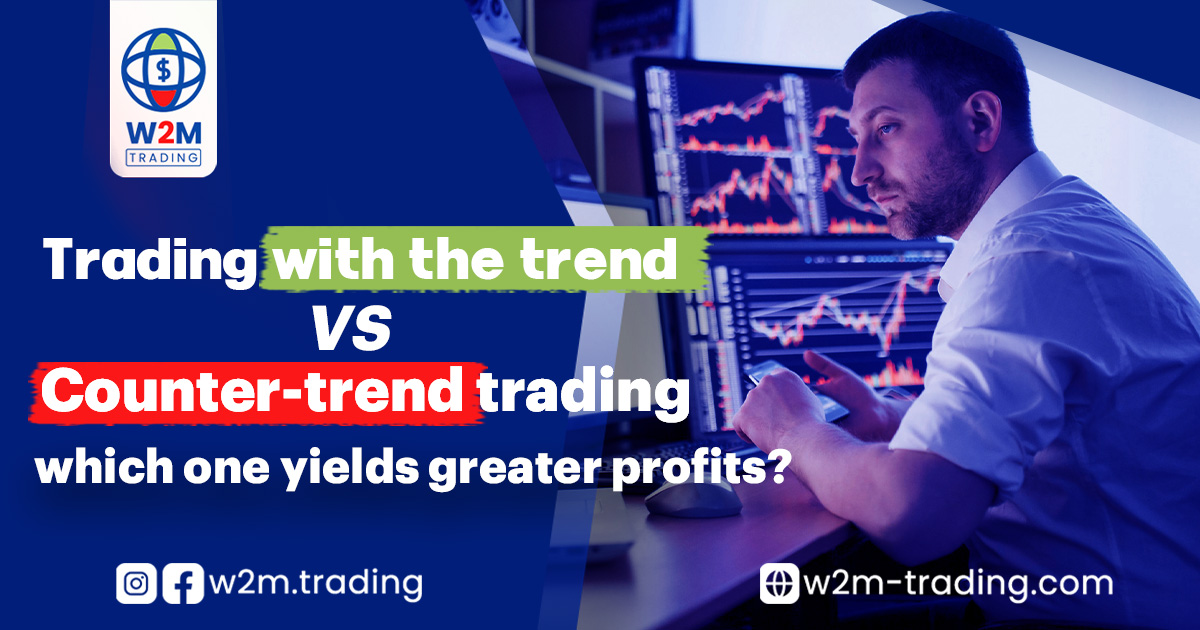- Attractive Education
- Beginner to Advance
- Flexible Timing

Trading in financial markets is not just about buying and selling assets; it is an art and a science that relies on understanding and analyzing price movements. Among the strategies traders use to achieve profits are trading with the trend and trading against the trend. These approaches differ in their methodology and strategies. The former aligns with the prevailing market trend, while the latter seeks to capitalize on potential price reversal points. In this article, we will provide a detailed explanation of each approach, focusing on their advantages and disadvantages, and help you determine which one might be more effective in achieving sustainable profits.
Trading with the Trend: Understanding the Approach and Its Basics
Trading with the trend is one of the most popular and widely used methods in trading. This approach follows the simple rule that “the trend is your friend,” meaning that the market typically continues in its current direction for an extended period, whether it is an upward or downward trend. Traders who use this method rely on identifying the prevailing market trend and opening trades that align with it.
How Does Trading with the Trend Work?
Trading with the trend requires traders to identify the prevailing trend using technical or fundamental analysis. In forex markets, for example, traders rely on indicators such as moving averages or trendlines to determine whether the market is in an uptrend or downtrend. Once the trend is identified, the trader opens a buy position in an upward market or a sell position in a downward market.
Advantages of Trading with the Trend
Potential Disadvantages of Trading with the Trend
Trading Against the Trend: Challenging the Movement and Reversal Strategies
Unlike trading with the trend, trading against the trend is based on the belief that prices do not remain in the same direction forever. Simply put, this approach requires traders to predict points where the trend might reverse and open trades against the current trend.
How Does Trading Against the Trend Work?
Traders who follow this strategy look for signs that the market may have reached a peak, such as overbought or oversold conditions, using indicators like the Relative Strength Index (RSI) or the Stochastic Oscillator. When signals indicate a potential market reversal, the trader opens a trade against the current trend.
Advantages of Trading Against the Trend
Potential Disadvantages of Trading Against the Trend
The Difference Between Trading with the Trend and Trading Against the Trend
While both trading with the trend and trading against the trend are based on strong analytical foundations, the two approaches differ in their goals and strategies.
Which Approach is Better?
The choice between trading with the trend and trading against the trend depends on several factors, including:
Conclusion
In conclusion, both trading with the trend and trading against the trend have their advantages and disadvantages. Trading with the trend is the better option for beginners and traders who prefer a safer strategy. On the other hand, trading against the trend offers greater profit potential but requires advanced analytical skills and a higher risk tolerance. The best strategy is the one that aligns with your personal style and level of experience in the market.
You can watch a video on Trading with the Trend vs. Trading Against the Trend: Which is Better and Why? on our YouTube channel through the following link
You can also follow everything related to trading through the educational series “Trading for Beginners” on our YouTube channel via this link
This site is protected by reCAPTCHA and the Google
Privacy Policy and
Terms of Service apply.